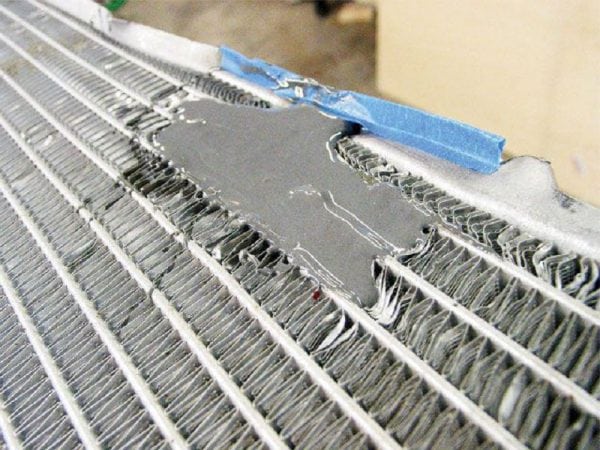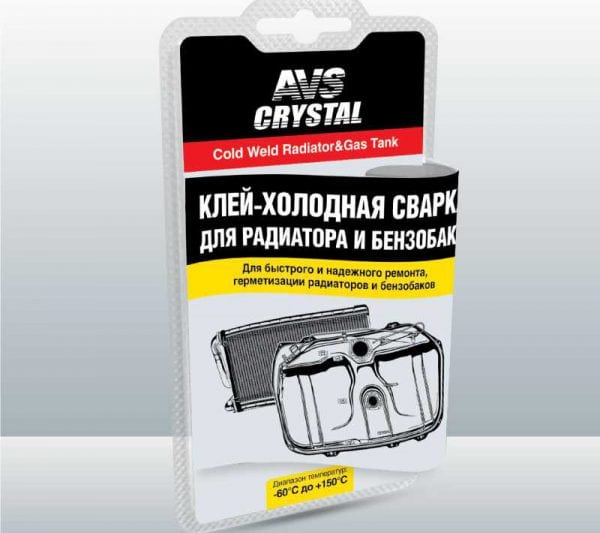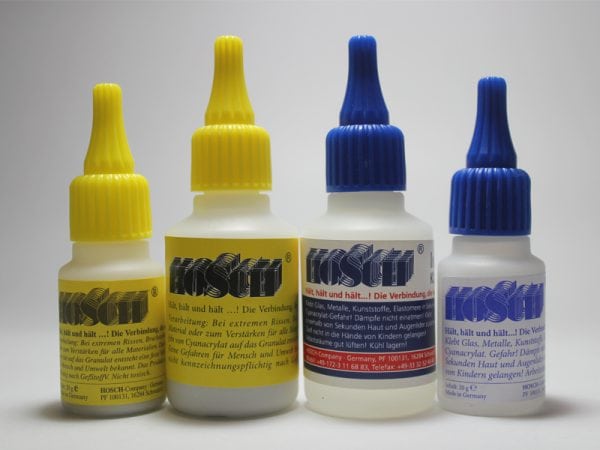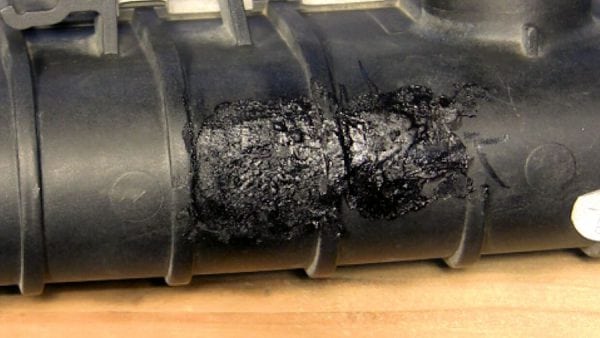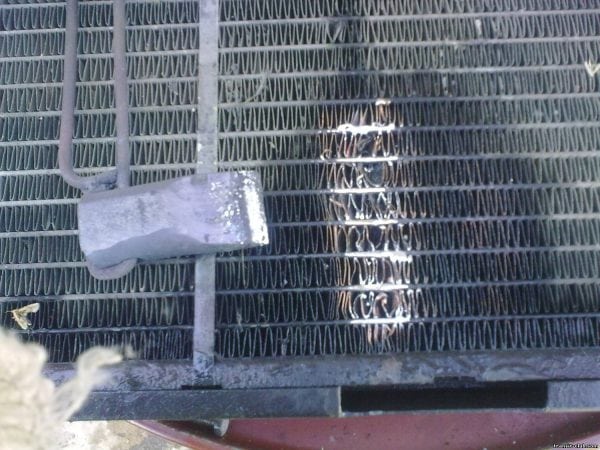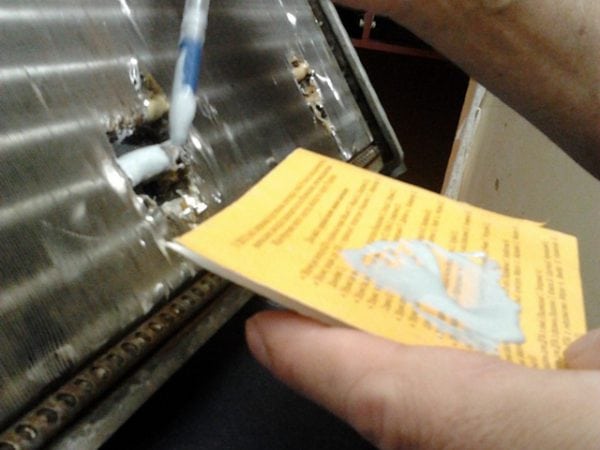It happens that a leak occurs in the car radiator. The reasons may be different, but the problem must be solved immediately. The radiator tank must be replaced, but it happens that it is not possible to do this immediately. In this situation, a simple method will help - gluing leaking plastic or other material, which will help to reach the replacement. How to glue the cooling radiator and how to carry out repairs - we will get acquainted with the information in more detail.
- The choice of repair methods and glue
- Sealing the plastic parts of the car radiator
- Sealing aluminum radiators
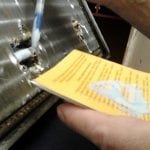
The choice of repair methods and glue
Radiators in trucks and cars are the most important part that helps to cool the mechanism, to remove excess heat from the engine. Cool liquid circulates through the pipes and hoses inside the device, and the convenient location of the upper part under the hood allows it to blow air.
Most cars are equipped with aluminum radiators. This material is ideal for this purpose - it is lightweight, durable, not susceptible to corrosion, its thermal conductivity is high (gives off heat, and parts will not overheat). Aluminum and plastic cooling batteries have replaced brass and copper products, which are much more expensive. But due to chemical characteristics, such tanks are much more difficult to repair, although nothing is impossible. The radiator can crack even from a small blow, and if it is made of plastic, even a large defect may appear.
The easiest way is to close the crack with a suitable adhesive. But picking up glue is not easy - most formulations do not hold, others quickly peel off. This is due to regular changes in temperature and pressure in the cooling system.
How to glue a radiator, and what other method can be used at home? Here are the main ones:
- Soldering. The heat-resistant plastic, from which radiators are made, as well as aluminum parts, can be fastened with a conventional soldering iron.
- Cold welding repair. The method is based on the use of special adhesives that melt the edges of the material and tightly seal the crack with a heat-resistant joint. Suitable if the radiator is plastic.
- Use of adhesive sealant. Only very small cracks in plastic radiators can be sealed. Like other measures, this is temporary.
An effective means to repair leaks is the two-component adhesive 3M DP8005. The composition contains acrylic, which can glue even the most complex types of plastic, for example, polypropylene. If the radiator burst, such material will be ideal. The seam created by him is not destroyed by the action of moisture, aggressive chemicals, and temperature differences. But the price of such a tool is very high (up to 1,500 rubles), so you need to think about the advisability of buying it compared to replacing a radiator.
to contents ↑Another glue is welding for Hosch plastic. If the radiator is plastic, the product can be bought without hesitation. Pressure up to 12 atmospheres is not a problem for the seam after completely hardening, and any defects can be glued with this glue.
Sealing the plastic parts of the car radiator
Most tools for repairing plastic are two-component - finished formulations do not give such a strong adhesion to the surface. How to seal damage on the radiator? Here is the working technique step by step:
- Prepare both components for welding the seam on the cooling tank, as well as sandpaper, gloves, cotton buds, a degreaser (acetone).
- Clean the area around the leak from dirt, dust, grease using acetone.
- Mix glue components as specified in the instructions. Put the product on the cracked area. Some formulations are applied in a different way. First, you need to sprinkle the plastic with a powder agent, and then cover it with liquid.
- If the hole is large, the procedure should be done in several steps until it is completely tightened.
- After 15 minutes, process the seam until smooth with fine grain sandpaper.
You can also glue the edges of the crack on the plastic with epoxy adhesive. The radiator is removed, the area is sanded, degreased. The place of damage is poured with epoxy resin, dried for a day. Do not rely on the durability of such a seam - it can last a couple of weeks from strength, then you need to purchase a new car part.
to contents ↑Sealing aluminum radiators
For devices made of aluminum, there is a special repair procedure; it involves soldering the damaged area. You need to start by removing the radiator from the car, after which all the remaining liquid is drained. The tank is washed with clean water, dried so that not a drop of moisture remains. Then you should carefully assess the condition of the tank, find all possible cracks, defects. This is done like this:
- take a bath or a large basin with water;
- prepare the pump or compressor;
- close the radiator cap fitting, as well as all the pipes of the cooling system, but leave the thinnest and connect the sediment tube;
- put the device in the bath, apply air;
- by the exit of the bubbles, determine where the defect is.
Repair the product with a conventional soldering iron does not work. A soldering iron needs a powerful, household analogs do not achieve high quality connections. Get a device with a power of 250 watts or more. It also requires flux (flux), solder, pliers, sandpaper, acetone, a set of files. For better heating of aluminum, it is recommended that you also have a small gas burner.
The flux is bought in stores for amateur radio enthusiasts, the packaging will indicate "for soldering aluminum." You can cook it yourself from rosin and iron filings (the latter is obtained when processing an iron product with a file). The components are combined in equal parts, heated on a fire. Solder is also bought at the Radio Parts store; it should be made of copper, zinc, silicon.
Soldering is done like this:
- to clean the area of the tank with a file and an emery cloth;
- degrease with acetone;
- warm the junction with a lamp, then place the flux there;
- process with a soldering iron;
- apply solder, warm with a soldering iron;
- Allow the patch to cool, if necessary, perform the second layer;
- After cooling, remove smudges with sandpaper.
Soldering should not be used if a leak is identified in the nozzle or on massive power components that carry a load. Soldering will be useless, such a radiator must be replaced immediately.

